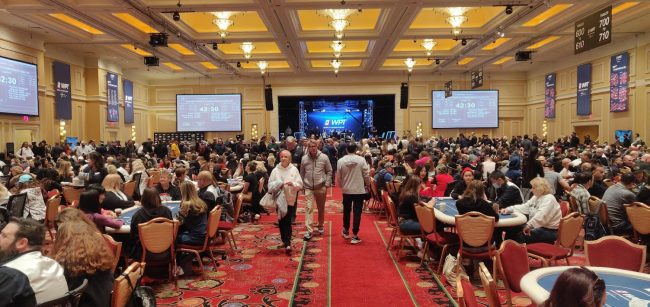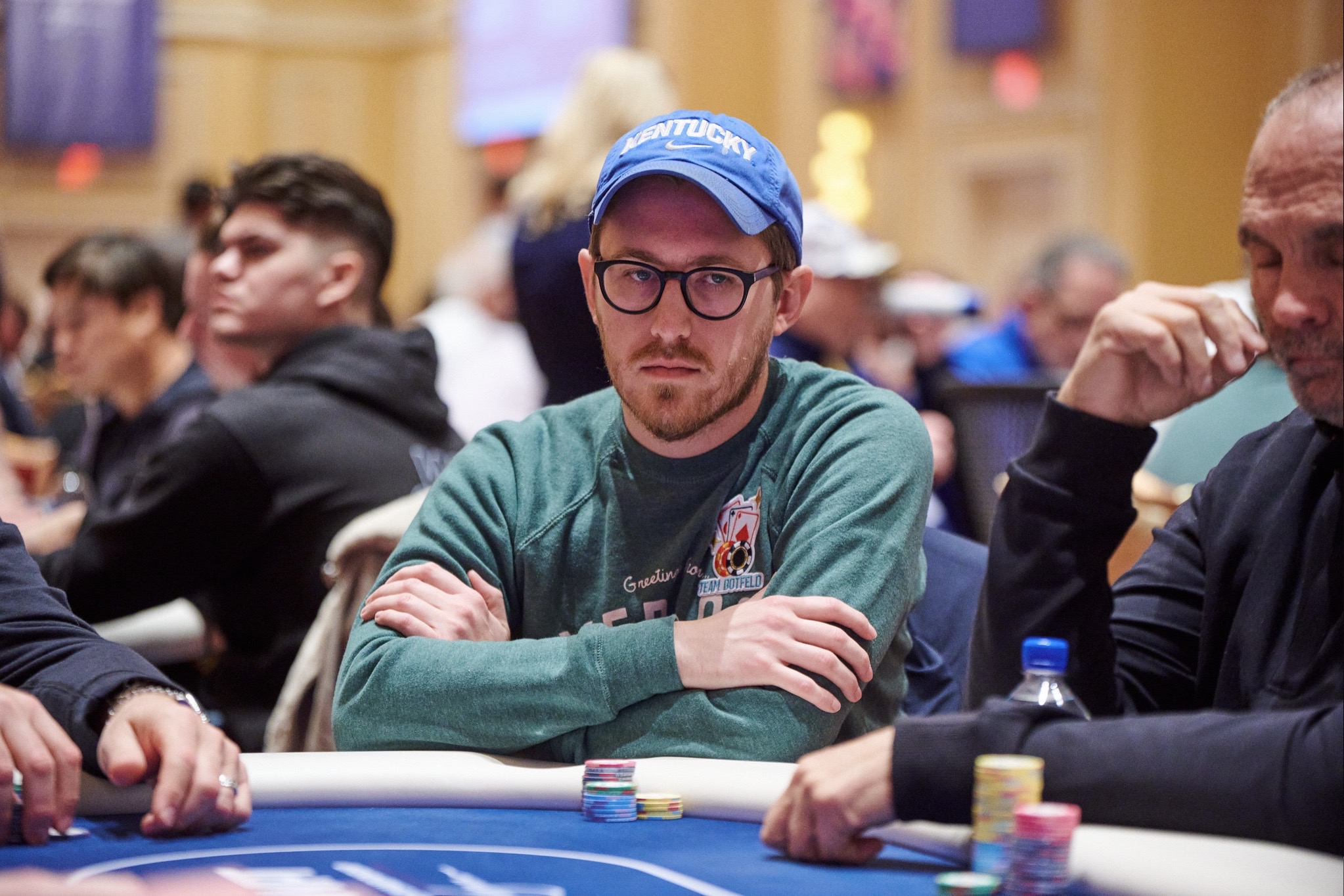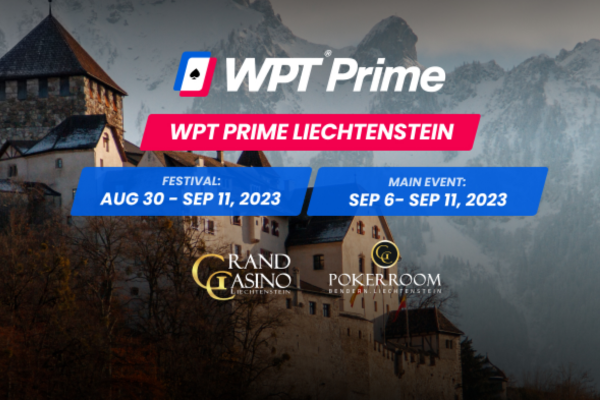In 2020, the future of live poker was left in question as poker rooms across the world closed during the peak of the pandemic. With the rise of solvers through the 2010s, poker was already getting tougher. Access to online play in the United States had been limited for years and the recreational poker boom of the Moneymaker era had been dwindling. Many questioned what the state of live poker could be when it returned.
But coming off of the PokerStars Players Championship at Poker Caribbean Adventure 2023, it is clear that live tournaments are back in full force. While players have shown their readiness to come back to the tables, it seems that there are new factors at play shining a spotlight on the biggest events across the poker industry.
Over the last year, the industry has done more than introduce high-value extravagant events like the PSPC and WPT World Championship. The widespread marketing for these tournaments has returned to former heights, broadcasting these tournaments in full to the poker masses. With the new attention to detail and access to watch from the beginning, it seems that the industry has rekindled the recreational player’s drive to chase the dream in tournaments.

A history of televised poker tournaments
For as long as poker broadcasting has been available, the WSOP Main Event has been the crown jewel. From 1973 through the 90s, the WSOP Main Event was one of the few tournaments receiving any national broadcasting attention. But it did not receive the full beginning-to-end broadcast treatment until 2003, once WSOP partnered with ESPN and one year after televised specials had introduced hole card cams.
As fate would have it, online qualifier Chris Moneymaker won the 2003 WSOP Main Event the first year this innovation was brought to the masses on ESPN. As a satellite-winning recreational player, Moneymaker’s win unleashed the all-time poker boom showing the casual audience what was possible. The charged public interest created lucrative sponsorships for the players and broadcasts alike, and WSOP became a television mainstay throughout the 2000s.
For many years, the Moneymaker boom would inspire a variety of televised poker content from online poker operators like PokerStars while organizations like the World Poker Tour showcased their events on mainstream TV stations like the Travel Channel. But public interest in poker waned following ‘Black Friday’ on April 15, 2011, when most poker clients were infamously frozen in the United States. This left many American casual players without a credible place to play online, leading to a decline in sponsorship money and a paucity in televised tournament play.
Later as poker became a niche interest and audiences consumed television in new ways, PokerGO led the way. After launching in 2017, PokerGO became the streaming home of fan favorite poker shows and tournament broadcasts from years past along with all-new live coverage. In addition to becoming the new home for full WSOP Main Event coverage, PokerGO became the place to watch Aria’s premium invite-only tournament event, the Super High Roller Bowl. Once a year, this $300k buy-in tournament attracts the wealthiest and well-studied players to compete for multimillion dollar payouts. And once again, fans were able to watch coverage from Level 1, following the action as players built their starting stacks toward the Final Table.
In 2019, Triton Poker followed in PokerGO’s footsteps, bringing a premium feel to an ultra high stakes tournament. The Triton Million: Helping Hand for Charity boasted a £1 million buy-in, with £50k “rake” toward charity. The event featured business men and women playing on one side of the field, each of whom were able to invite one professional player for the pro side of the field. The event broke a record for the largest payout for first at £30,670,000 (which was chopped between the top two finishers), broadcasting from beginning to end online. The event set a new standard for production value with the elaborate tournament room of tables and player interviews providing context for the action.
By the 2020s, broadcasts had become common through PokerGO and live streaming, but cameras were typically reserved for final tables. At that point, the full broadcast illustrating the hope and excitement right at the beginning of the industry’s most exciting events was reserved for the WSOP Main Event.
A return to peak poker
As players have become eager to return to live tournaments, the standard for tournament broadcasting has set new heights over the last year. The WSOP debuted to universal fanfare at its new home on the Las Vegas Strip, with an all-new, expanded broadcast setup. Later in the summer, the World Poker Tour announced their $15 million guarantee for a surefire December spectacle: the WPT World Championship. Then after four long years, PokerStars Players Championship returned to the Bahamas in its glory after an Olympics-length sabbatical.
Throughout 2022, the WPT and PokerStars innovated to bring the common player to these high stakes arenas and feel the thrill of playing in the largest prize pools in poker history. WPT Global unleashed loads of giveaway packages through a variety of Twitter challenges while PokerStars distributed loads of $30k Platinum Passes prize packages in innovative ways, including partnering with Poker.org to send players on a detective quest to find a disguised player in the wild.
READ MORE: Poker’s Plus One Platinum Pass PSPC Experience
But in addition to running incredible series that attracted poker regulars from around the world, WPT and PokerStars went above and beyond during their events. They broadcasted these spectacles throughout to all their fans online to recapture their imagination. Both the WPT World Championship and PokerStars wasted no time bringing in top media personalities to commentate, social media personalities to promote on the sideline, and podcasts to recap the day-to-day madness. Whether you prefer Jamie Kerstetter’s commentary, Joey Ingram’s comedy, or the OnlyFriends podcast’s banter, these events worked overtime to ensure they show you they were the center of the poker world.
And once they hooked you in, these events showed you the field right from the get-go. Seeing these rooms full of hundreds of entries, green players with starting stacks and a twinkle in their eyes, showed a fresh perspective to casual players across the world.
It has been a welcome sight, as only watching a Final Table can feel like having a bucket of cold water being dropped on you in comparison. Normally, final tables are full of stoic professionals. And believe me, I love intense ICM decisions and advanced play. And I am a fan of learning from so many of these players, as a serious recreational player myself. But I don’t think that is what the average player is looking for.
In fact, it may be the worst stage of the tournament to show off what’s great about the game. Only seeing this point of play suggests to audiences that reaching the Final Table requires them to be something they aren’t interested in. Showing players from the beginning gives us the opportunity to meet the common fan. Audiences are captivated by the dream that’s alive early in a tournament and the stories along the way. It’s great if they manage to hang on until late into tournament coverage, but it is rarely the later stages of coverage that will spark curiosity.
Building on tournament hype
After this recent stretch, the poker world now has two major events to look forward to aside from the WSOP, hopefully on an annual basis. Their early results have been so promising that one can’t help but imagine how the industry can continue building the hype and generating new interest.
While the WPT World Championship and PSPC set a high standard for showing what a major tournament can look like, we are still talking about $10k and $25k buy-ins. Even with all of the giveaways and satellites available to reach these heights, these are price points that are going to escape all but the most successful poker personalities in the community.
However, there is a “fab foursome” of mid-stakes tournaments ripe to capture the imagination of weekend warriors across the United States and the rest of the world. The Mid-States Poker Tour, WPT Prime, Run Good Poker Tour, and World Series of Poker Circuit have solidified themselves as the go-to options for tournament players chasing glory in tournaments with buy-ins of $200-2,000. And while they are well-known by those paying attention, finding a way to simplify broadcasts of their Main Events to the masses could be an excellent way to show all those curious about poker what is actually within their reach.
🌐♣️🏆 4th Global Poker Awards Nominees – Best Mid-Major Circuit/Tour
♠️ RUNGOOD Poker Series (@RGPokerSeries)
♥️ Mid-States Poker Tour (@msptpoker)
♣️ World Series of Poker Circuit (@WSOPC)
♦️ WPT Prime (@WPT)
ℹ️ https://t.co/PXQl0EXvBn pic.twitter.com/yQEcpqxyLz— Global Poker Index (@gpi) February 14, 2023
Broadcasting a tournament from beginning to end with professional commentary and production value is no simple task, of course. Asking these organizations to do so from the ground up would be a tall order. However, if the details could be worked out, imagine if these organizations were able to schedule stops at locations with established streaming setups.
For example, the WSOPC Main Event in Los Angeles streamed its Final Table from Live at the Bike. But imagine if the series had been promoted and hyped with the promise of full coverage for months ahead. Pairing with destinations like Live at the Bike, Hustler Casino, The Lodge, and Texas Card House, which are equipped to handle the burden of this coverage, could be a win-win for the organizations and locations alike.
I can admit, this may be a pipedream for the time being. But only because these organizations haven’t been given a roadmap to follow to make the vision happen. With PokerGO already providing Final Table coverage of many WSOP events and full coverage of the Main Event, just imagine if they were able to pair the full coverage approach with one other small event.
In 2023, the WSOP is introducing its latest large field budget event: Gladiators of Poker. This $300 tournament is the cheapest numbered event on the schedule and boasts a $3 million guarantee, all within the first week of the WSOP schedule. What better event to showcase from beginning to end? At this price point, you are sure to find the passion, wild play, and drama from recreational players that creates TV gold.
Glen Craigen is living every poker player’s dream!
Craigen has turned a pure freeroll into over $35,000🔒 pic.twitter.com/jNbRCDEo69
— Poker.org (@pokerorg) February 1, 2023
Think of the new names you actually remember from recent years. Aaron Zhang. Nicholas “Dirty Diaper” Rigby. Glen Craigen, in disbelief turning a freeroll into over $40k. These aren’t the pros we are familiar with. They are the most creative, passionate players in the fields that we couldn’t ignore. They remind us why we fell in love with the game in the first place. If the poker industry takes anything away from the last year of success, I hope that it’s realizing they are only scratching the surface of how they can bring these players’ stories to the masses.




